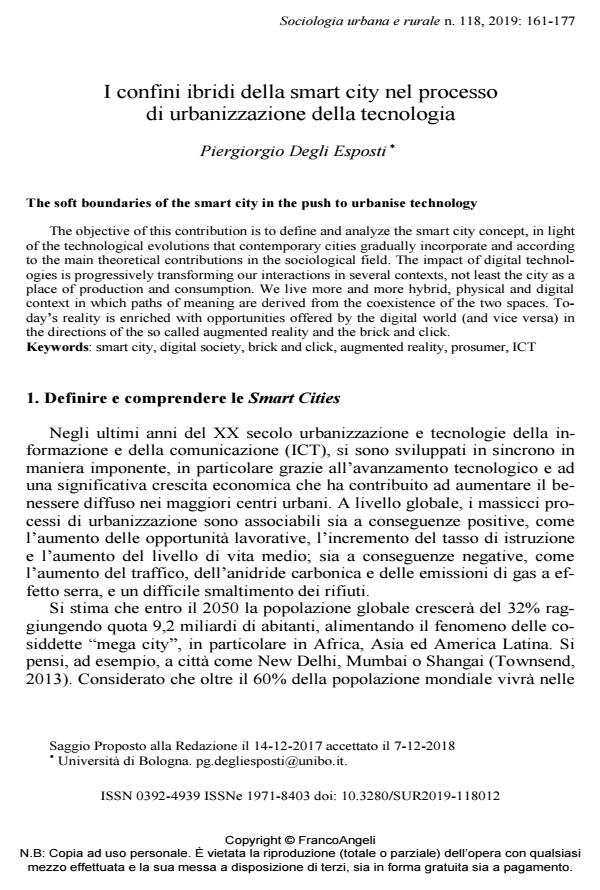The soft boundaries of the smart city in the push to urbanise technology
Journal title SOCIOLOGIA URBANA E RURALE
Author/s Piergiorgio Degli Esposti
Publishing Year 2019 Issue 2019/118
Language Italian Pages 17 P. 161-177 File size 374 KB
DOI 10.3280/SUR2019-118012
DOI is like a bar code for intellectual property: to have more infomation
click here
Below, you can see the article first page
If you want to buy this article in PDF format, you can do it, following the instructions to buy download credits

FrancoAngeli is member of Publishers International Linking Association, Inc (PILA), a not-for-profit association which run the CrossRef service enabling links to and from online scholarly content.
The objective of this contribution is to define and analyze the smart city concept, in light of the technological evolutions that contemporary cities gradually incorporate and according to the main theoretical contributions in the sociological field. The impact of digital technologies is progressively transforming our interactions in several contexts, not least the city as a place of production and consumption. We live more and more hybrid, physical and digital context in which paths of meaning are derived from the coexistence of the two spaces. Today’s reality is enriched with opportunities offered by the digital world (and vice versa) in the directions of the so called augmented reality and the brick and click.
Keywords: Smart city, digital society, brick and click, augmented reality, prosumer, ICT
- International Conference on Cognitive based Information Processing and Applications (CIPA 2021) Shunqiu Li, Zhong Li, pp.979 (ISBN:978-981-16-5856-3)
Piergiorgio Degli Esposti, confini ibridi della smart city nel processo di urbanizzazione della tecnologia in "SOCIOLOGIA URBANA E RURALE" 118/2019, pp 161-177, DOI: 10.3280/SUR2019-118012